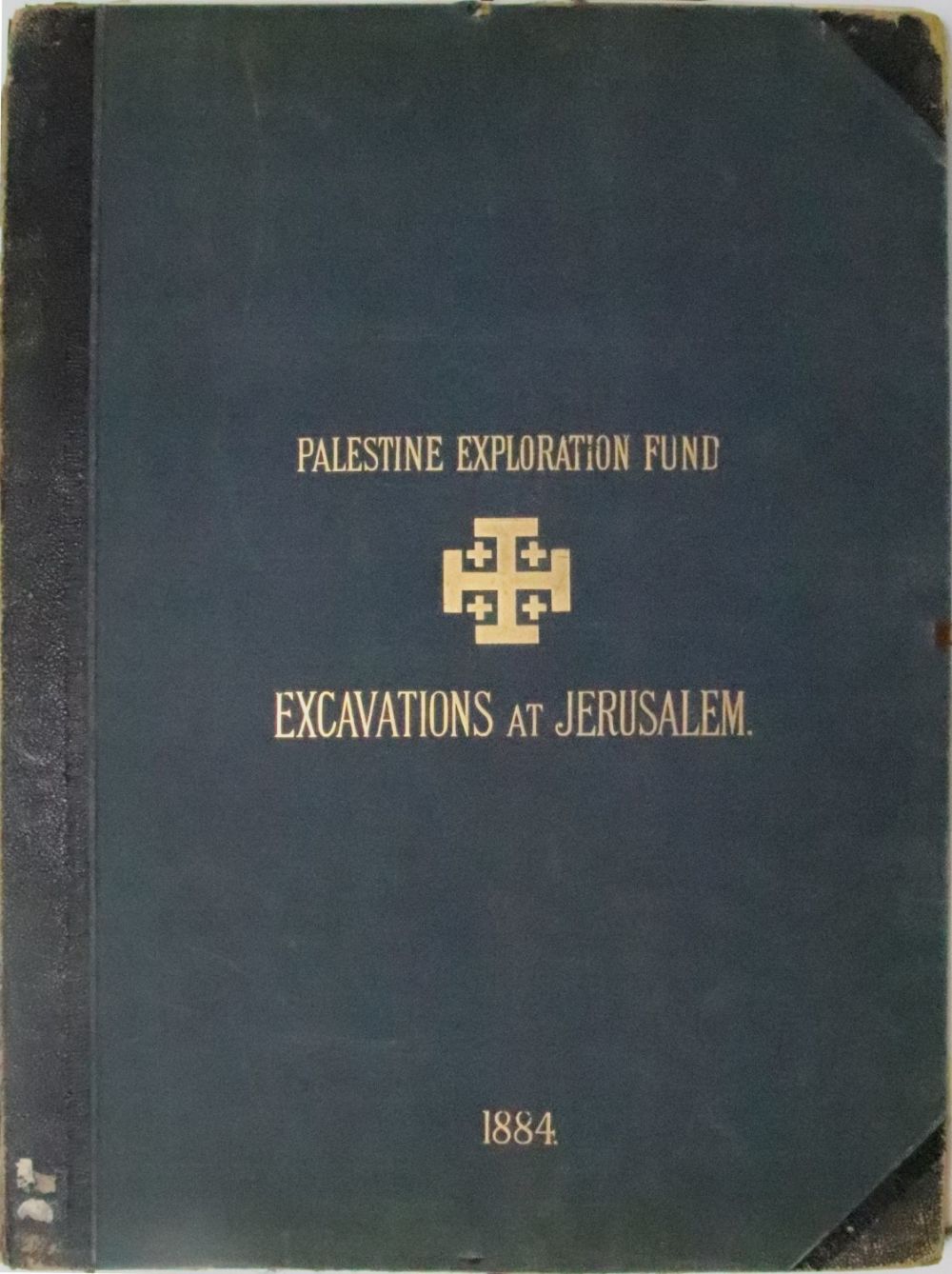|
LOT 152:
A folder with 42 large printing plates - drawings showing the excavations of the "Palestine Exploration Fund" in ...
more...
|
|



|
Start price:
$
700
Buyer's Premium: 22%
VAT: 17% On commission only
Users from foreign countries may be exempted from tax payments, according to the relevant tax regulations
|
A folder with 42 large printing plates - drawings showing the excavations of the "Palestine Exploration Fund" in Jerusalem - Charles Warren - 1884
Plans, Elevation Sections shewing the results of Excavations at jerusalem, 1867-70. Executed for the Committee of the Palestine Exploration Fund by Captain Charles Warren. Printed by Vincent Brooks, Day & Son, Lith. London 1884. 42 large drawing plates [76x57 cm.] depicting the results of the excavations of the British delegation led by Sir Charles Warren, who was sent to dig and explore the Temple Mount on behalf of the Palestine Excavation Foundation (PEF) in 1867-70.
On May 12, 1865, the British Institute for the Study of the Land of Israel was established - the "Palestine Exploration Fund", and its goals were announced: to explore Palestine historically, archaeologically, anthropologically, topographically, geologically, and in terms of natural sciences - flora, fauna and meteorology of Palestine. In November 1866, the second delegation led by Sir Charles Warren set out, arriving in Palestine in 1867. Although it encountered many difficulties, both due to severe budget shortages and hostile treatment by the authorities and frequent illnesses, it managed to achieve significant results during three years of researching the country, with a special emphasis on the archeology of Jerusalem. Warren, one of the pioneers of archeology in the Land of Israel, made a number of fundamental discoveries in the study of Jerusalem during the same journey: In the City of David, he discovered a shaft that connects to the Hezekiah pit. Warren believed that through this shaft, Yoav ben Tzruya snuck into the fortified Jebus and opened its gates to the armies of David, and even demonstrated this by climbing up the shaft himself. This theory lasted for about 130 years. Warren, who wanted to dig up the Temple Mount and encountered the Waqf's refusal, inside the Temple Mount itself, had to make do with climbing into existing cisterns, which he mapped out precisely. Outside the Temple Mount, he was usually allowed to dig as he pleased, Warren did dig a series of shafts, some of which still exist, while some of which were "swallowed up" when the Ophelian Garden and the Western Wall tunnels were later excavated. His finds in the vicinity of the Temple Mount included the "Warren Gate" and the 'Hasmonean Hall' that now belong to the Western Wall Tunnels complex, and in fact he was among the first to start digging the Western Wall tunnels. Warren even reached the walls of the Temple Mount in his excavations. During these investigations, he discovered eight seals for the king, the first ever discovered. It is named after one of the four entrance gates to the Temple Mount that were at the Western Wall during the Second Temple period.
Warren submitted the results of his research to the foundation in the folder before us, which was published in 1884, in the form of large sketched boards describing the results of his research on that journey. The plates show various plans, elevations and sections: the excavations near the Temple Mount walls (including the Western Wall); Robinson's Arch and Wilson's Arch; gates and passages revealed near the Ophel Wall; Warren's Shaft in the City of David; dozens of jars, vessels and shards; Topographic drawings of the surface of Jerusalem; And more.
Each print is signed in the plate by the head of the expedition, Charles Warren. These charts continue to serve researchers to this day.
[1] Title page, with the names of seven co-authors and a list of contents. 42 boards [out of 50 originally] 76x57 cm. Original cardboard box: 79x59 cm. Slight tears in the cardboard case. The boards are in very good condition.


